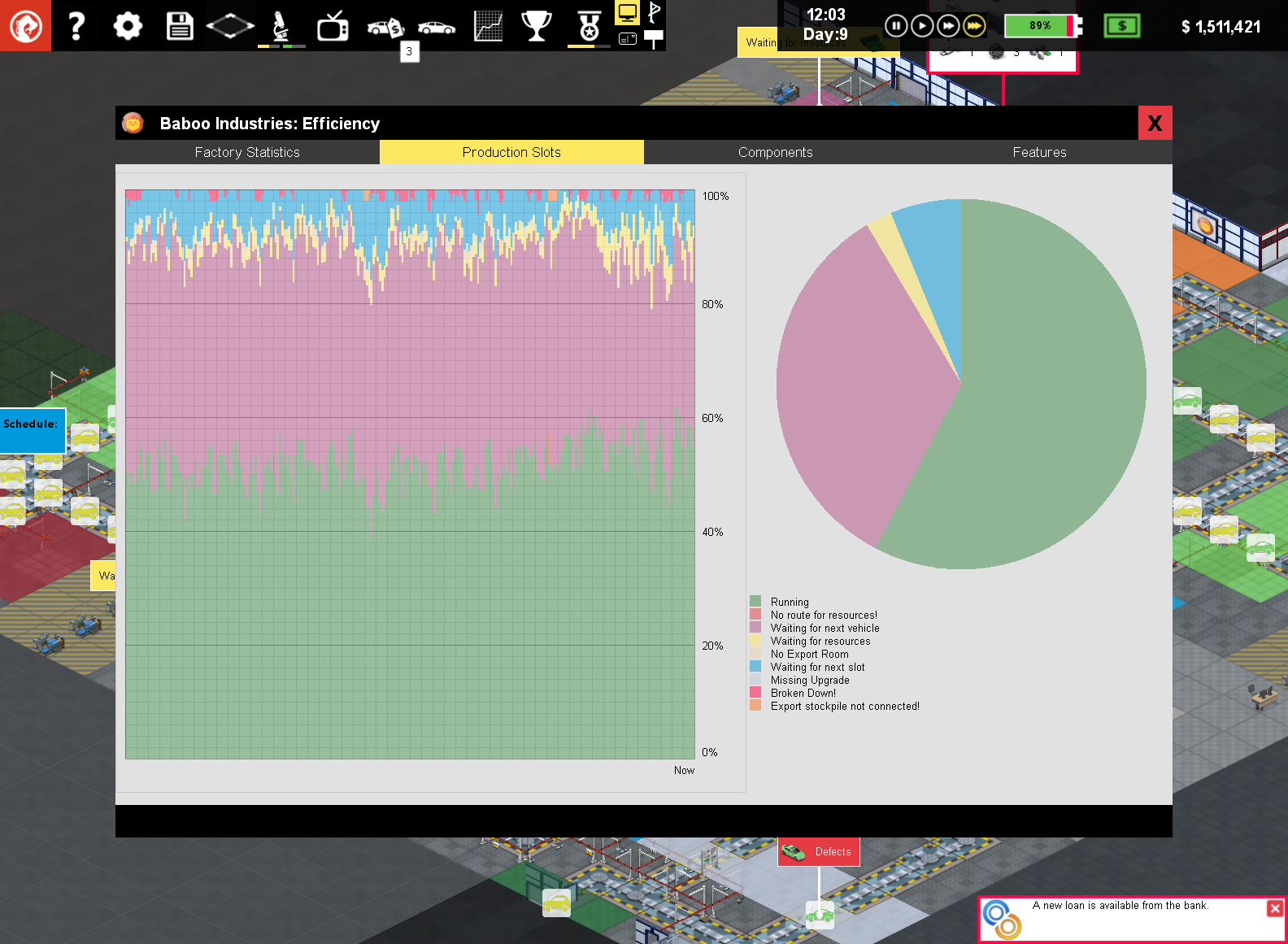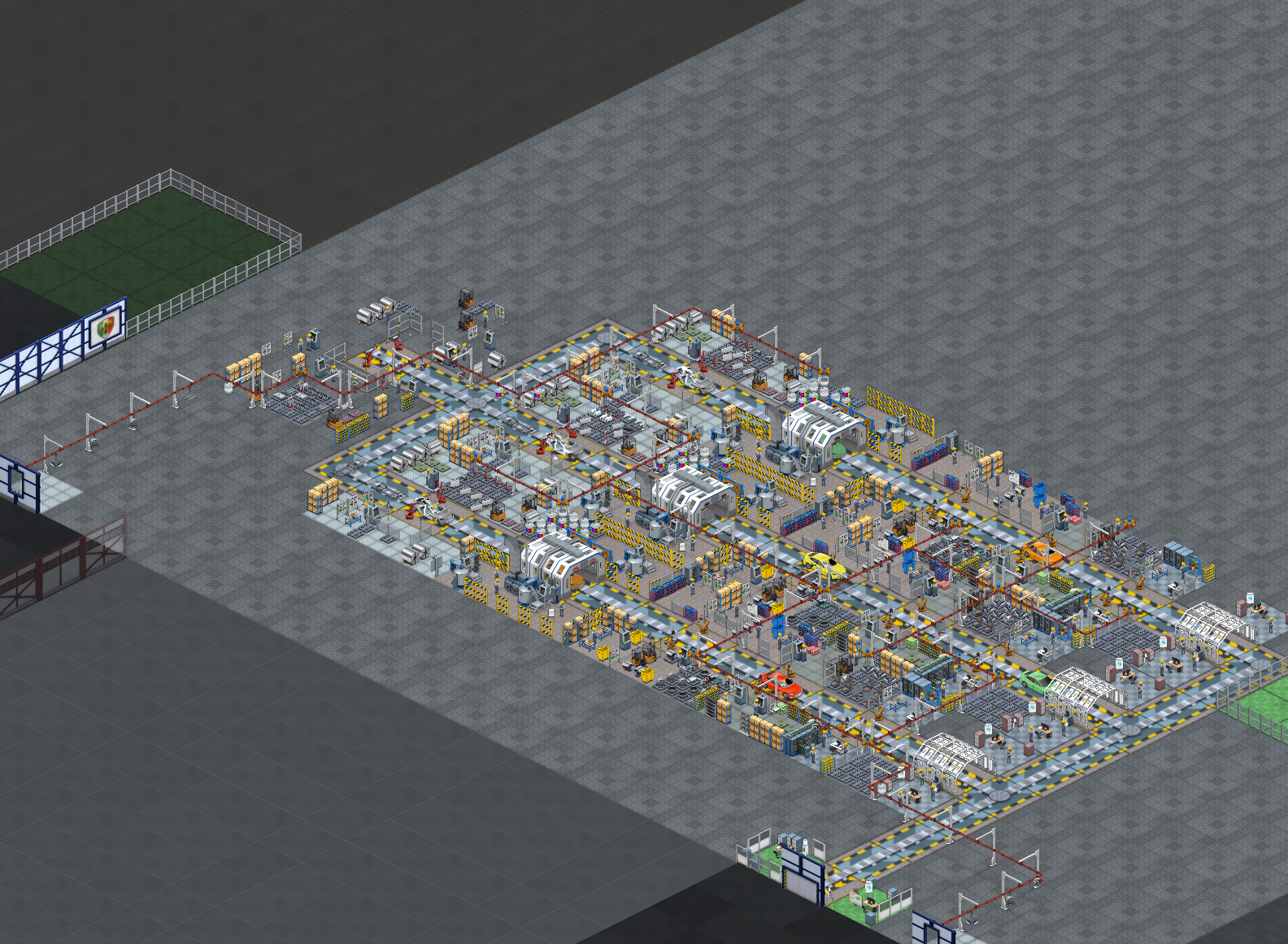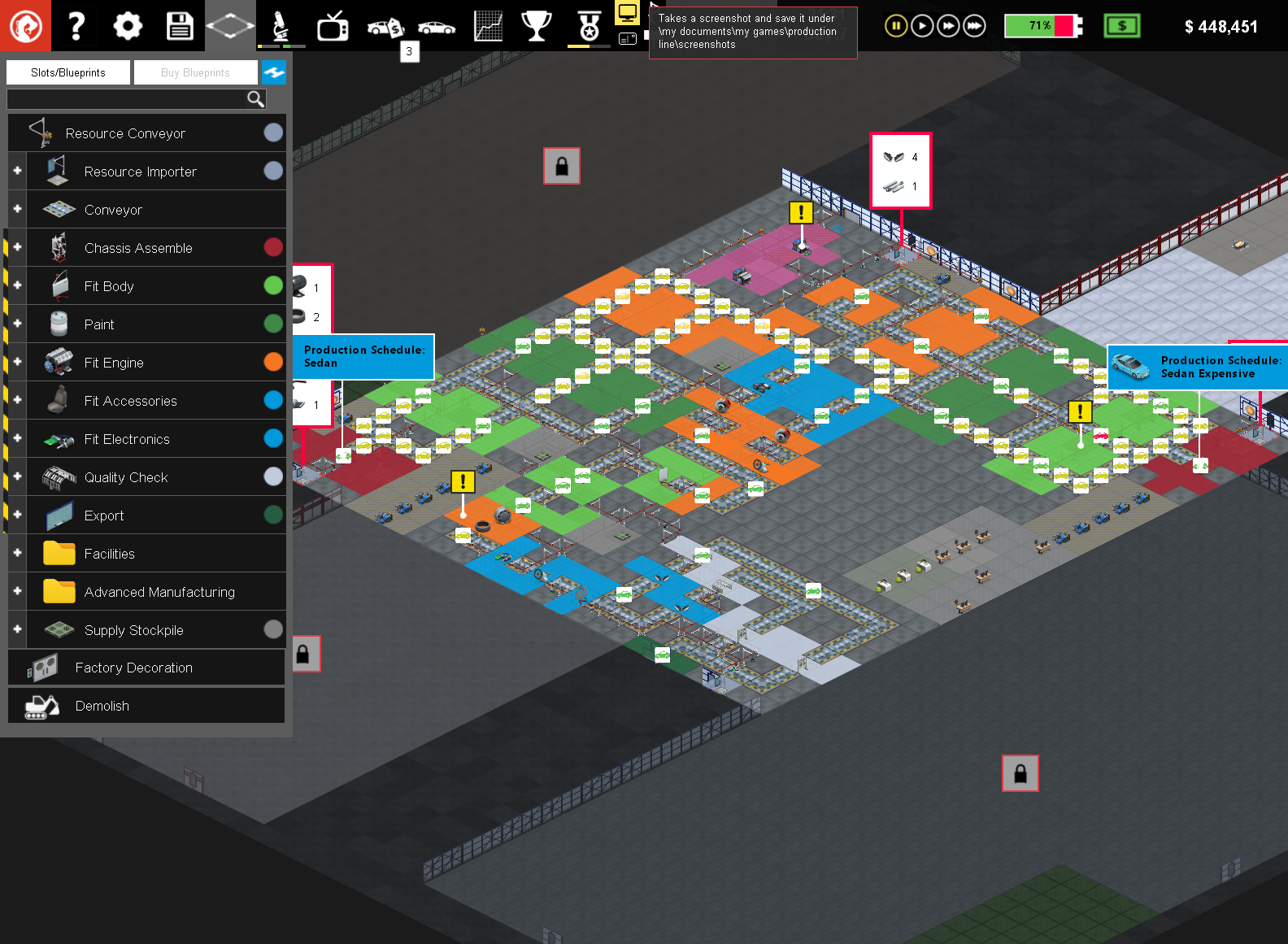A High Production Rate Solves Many Ills
An Overview of Production Line: Car Factory Simulation
A friend recently introduced me to Production Line, a game about building an automotive company. Over the holiday weekend, I fired it up and channeled my inner Elon Musk and plowed my precious seed dollars into a building a brand new sedan and the factory to produce it. Little did I know that I would be teetering on the edge of bankruptcy repeatedly, just like Musk, as I raced ahead to scale production as fast possible. I’ve put together a quick walk-through of the game for you all to enjoy.
Starting out, I skipped all instructions on how to play and started a new company, Baboo Industries. I bought a small factory and had $1.3M leftover to buy factory equipment. As I laid out my first line, I placed the starting station, chassis assembly, into the front of the factory near the receiving docks and ended with a quality inspection precisely aligned with the export door. The sedans I would be producing would have their chassis assembles every 13 minutes then traverse one of three sub lines consisting of body panel assembly, paint, powertrain fit, accessories fit, and electronics fit stations before being inspected for defects and exported to the dealership showroom. The planned bottleneck was initially the paint shop, clocking in with a cycle time of 34 minutes and 24 seconds, but as the game progressed that changed rapidly and I was wishing I had read the instructions.
As the days progressed, the sedan was selling well so I needed to commission a new line. I took out a loan at a high interest rate and started laying out my second line which began in the complete opposite corner of the factory. The goal was to balance the overall throughput of the factory by having separate lines for the long running operations of body panel assembly, paint, and powertrain fit then merge the lines for quick operations such as accessories and electronics fit. Along the way I had researched new features for the sedan such as a start-stop engine, cruise control, and electronic windows alongside factory efficiency technologies such as faster robots and conveyors. These changes to both the car being produced and each station efficiency dramatically changed where the bottlenecks occurred within the lines. It was a constant struggle to add and remove stations while keeping the line moving and investing in new features that customers wanted.

I was able to keep my factory running efficiently enough to have strong margins on the sedan model. Across all stations, the factory was running between 40 and 60% of the time with the remainder largely attributed to waiting for the next vehicle. Getting components imported into each station was of little impact to any machine availability issues. Throughout the game, I utilized all my cash flow from operations and tried to manage debt levels while continually reinvesting in new features for the sedan model and improving efficiency on the production lines. The demand for my sedan waned at times due to commoditized features so I also needed to generate new demand by pulling some marketing levers. Lastly, my strong margins allowed me to considerably cut price when needed to move the sedan into a lower market segment and generate plenty new cash for the business to avoid bankruptcy.
Car Factory Takeaways
Overall, the game is both quite fun and realistic and brings into perspective the opportunities of Industry 4.0. While I was playing, I often tore out production stations and built new ones in real time while trying to produce cars with no planning. If I had the ~ability~ patience to use digital twins to plan and simulate line throughput while optimizing for cost I would have been considerably less wasteful. If I had analytics to assist in demand planning and real-time assessment of customer feedback I could have made my product development priorities align to better margin profiles and focused on unmet market niches.
Back in the real world, Rivian continues to ramps production and Production Line gives me a new perspective as to how they turn their backlog of trucks into cash and reinvest in product development and operations. Production Line provides a realistic experience of the pain and risk reward that comes with being an upstart automotive firm. It dawned on me while taking a break from playing and watching a video about SpaceX’s Raptor engine (below) that when Elon repeatedly said, “A high production rate solves many ills” exactly captured the essence required to be successful at both Production Line and real world manufacturing businesses. By having a high production rate it affords many iterations to improve efficiency and enhance product market fit before running out of cash. The developers should add that maxim into the instructions for Production Line.


